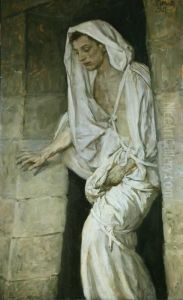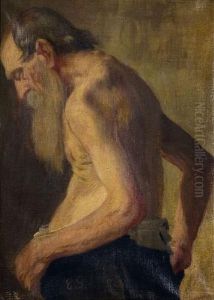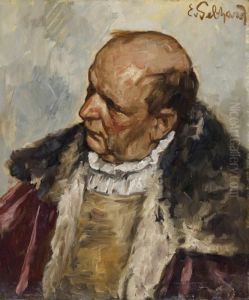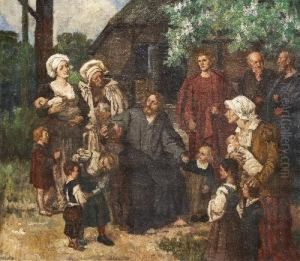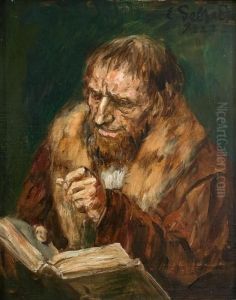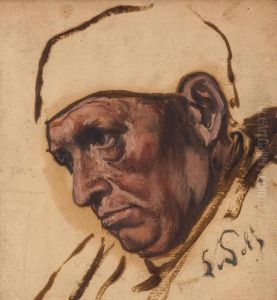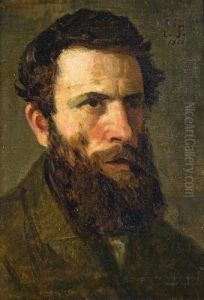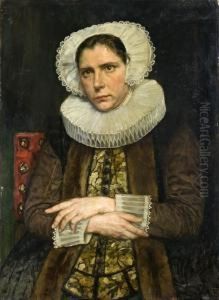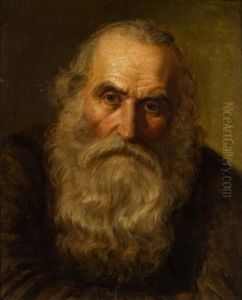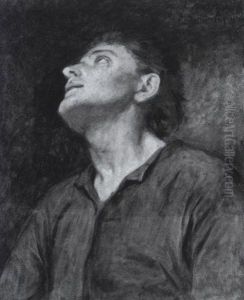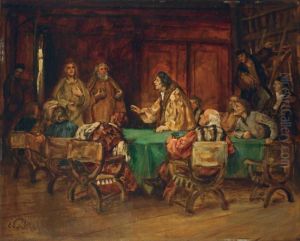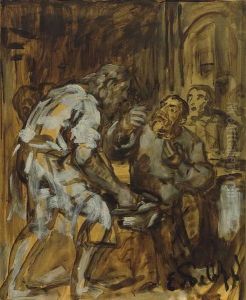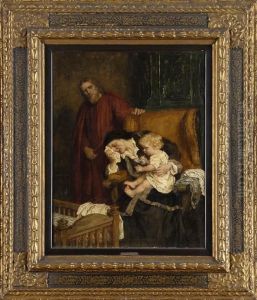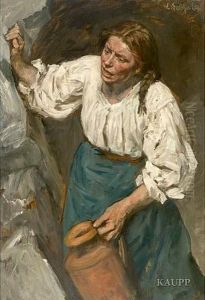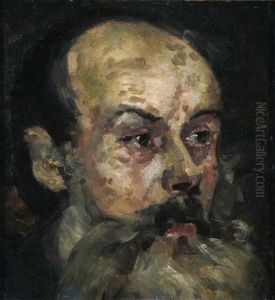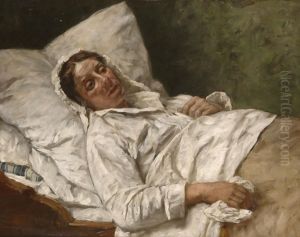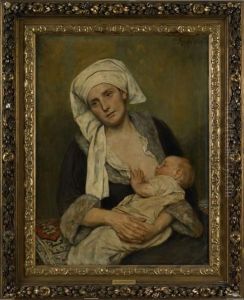Eduard Von Gebhardt Paintings
Franz Karl Eduard von Gebhardt was a distinguished Baltic German painter, primarily known for his Christian-themed works. Born on February 26, 1838, in Järva-Jaani, then part of the Russian Empire and now Estonia, Gebhardt was influenced by the Düsseldorf school of painting and became a prominent representative of academic art.
Eduard von Gebhardt's early training began at the Düsseldorf Academy, where he studied under the tutelage of the historical painter Wilhelm Sohn. He later became a pupil of the renowned artist Eduard Bendemann, who had a significant impact on Gebhardt's artistic development. His education and exposure to the Düsseldorf school shaped his style, which was characterized by meticulous attention to detail and a focus on historical and religious subjects.
Throughout his career, Gebhardt was deeply committed to religious themes, and he gained considerable acclaim for his depictions of scenes from the life of Jesus Christ. His paintings often reflected a serene and contemplative mood, aiming to evoke spiritual reflection and emotion in the viewer. One of his most famous works is 'The Raising of Lazarus,' which exhibited his mastery of composition and his ability to portray biblical events with a sense of realism and humanity.
Gebhardt's influence extended beyond his own artworks. He was a professor at the Düsseldorf Academy, where he taught for several decades, starting in 1873. Over the years, he mentored many young artists, imparting the techniques and principles of the Düsseldorf school. His role as an educator helped perpetuate the school's approach and values in the generations that followed.
In recognition of his contributions to art, Eduard von Gebhardt was honored with numerous awards and medals. He was also ennobled, which added 'von' to his surname, reflecting his status in society. His works were widely exhibited and collected during his lifetime, and they continue to be appreciated for their historical and religious significance.
Eduard von Gebhardt passed away on June 23, 1925, in Düsseldorf, Germany, leaving behind a legacy as one of the most respected religious painters of his era. His paintings remain on display in various museums and galleries, serving as a testament to his skill and devotion to his craft.
